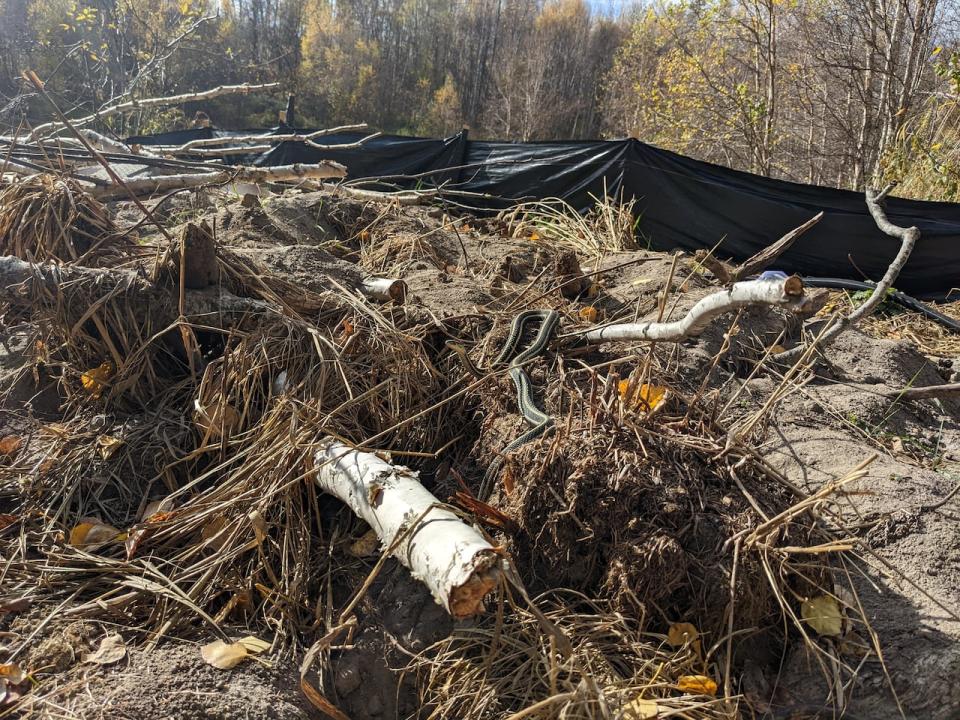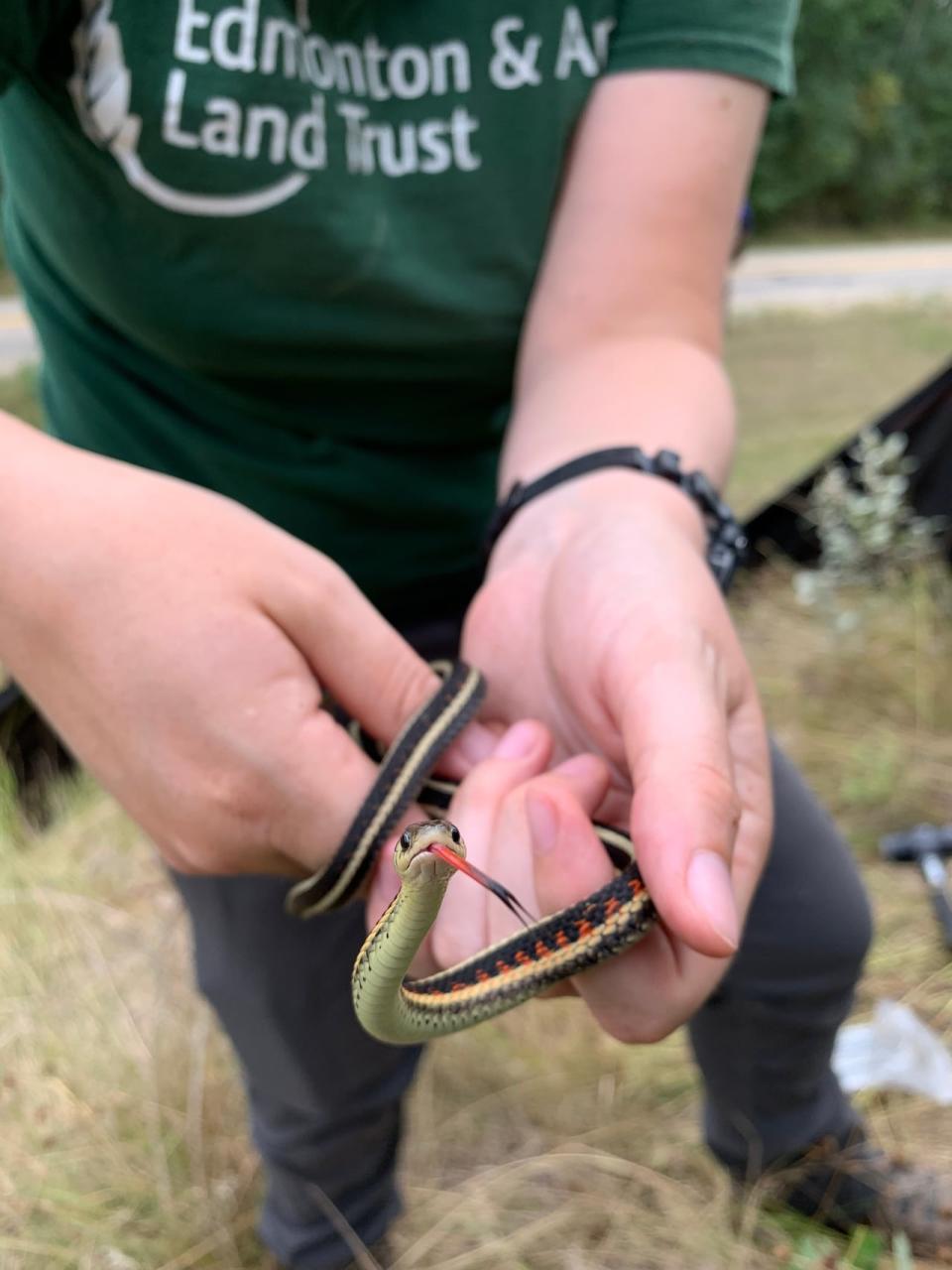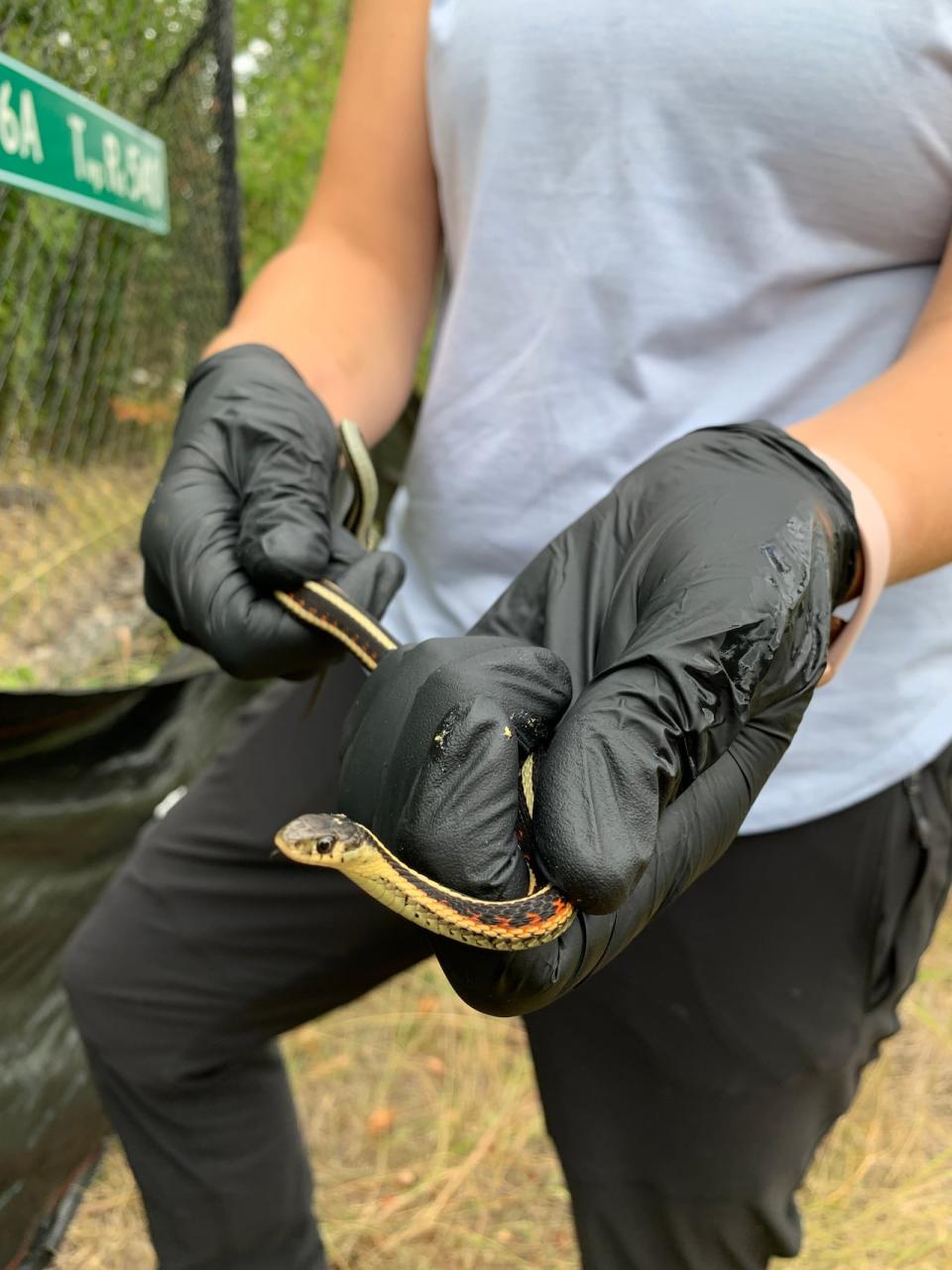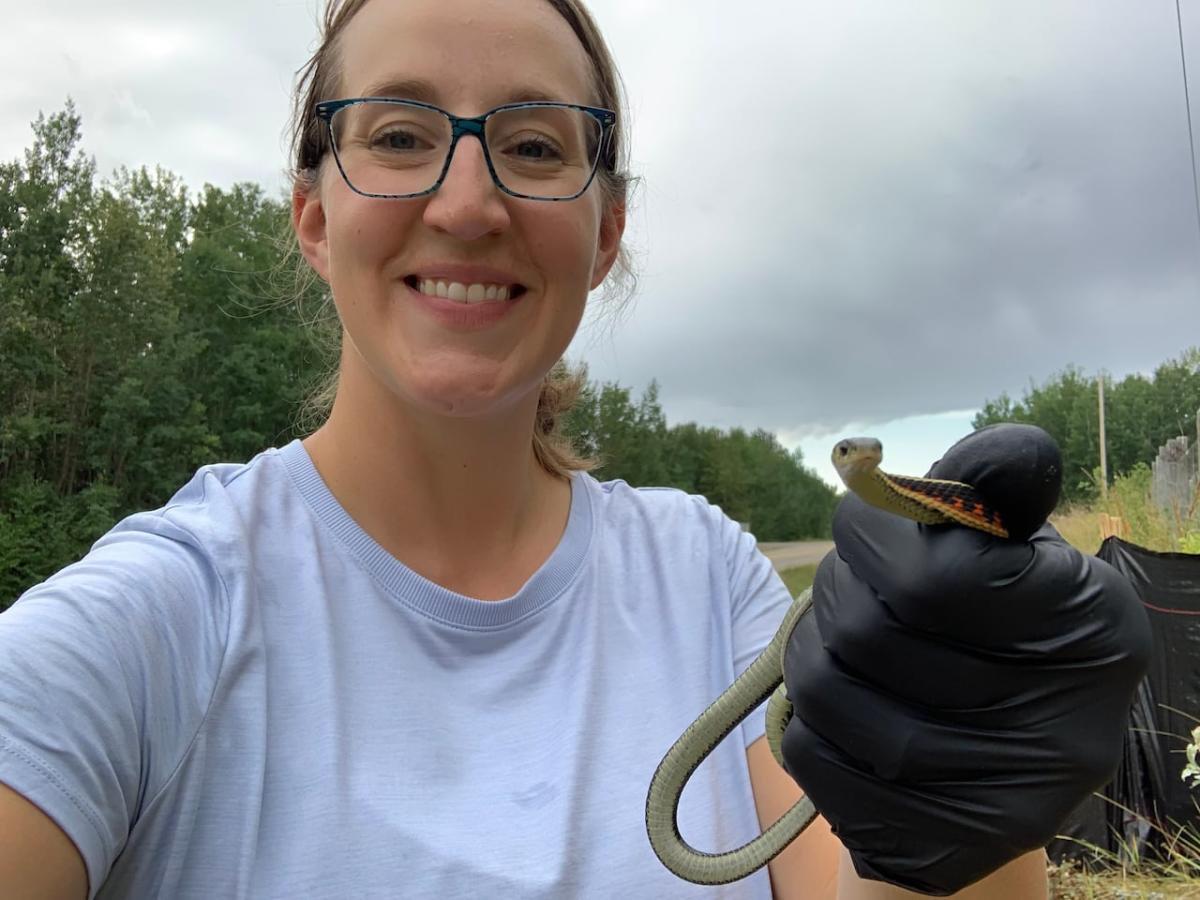For the third year in a row, Ciara Fraser and her team of about 80 volunteers will have their eyes to the ground in an area west of Edmonton, looking for red-sided garter snakes.
The species is at risk of being run over and Fraser, a conservation co-ordinator with the Edmonton and Area Land Trust, is relocating a den of snakes to a new area.
“The snakes were at risk of being struck by vehicles where their hibernaculum is,” she told CBC’s Edmonton AM.
Hibernacula are underground chambers where snakes hibernate.

Hibernacula are underground chambers where snakes hibernate. This one will be relocated to a safer area by Ciara Fraser and her team. (Submitted by Edmonton and Area Land Trust)
The red-sided garter snake is the most wide-ranging snake in Alberta and can be found in the Boreal Forest, Foothills and Parkland regions.
They are usually dark olive to black in colour with a yellow or green stripe along the top of its back and each side of the body. Red markings are present between stripes giving the snake its name.
These snakes are essential to Edmonton’s ecosystem, Fraser said, because they control the rodent population and are a food source for other species.
Like all cold-blooded animals, snakes seek their warmth from external surfaces like sun-warmed rocks.
“Now pavement acts a lot like a sun-warmed rock, which makes it attractive for [snakes] to sun themselves on,” Fraser said, adding there’s a risk for snakes to be struck by passing vehicles.
Alberta’s roadkill numbers have increased, according to provincial data from last year. The number one animal hit: snakes.
Almost 400 snake carcasses were reported in 2023, the report said. In 2022, there were only eight.
In an emailed statement, the province said Alberta Transportation and Economic Corridors monitors wildlife deaths on roads through the Alberta Wildlife Watch system.
“Data from this program is used to identify locations for mitigation to reduce wildlife-caused vehicle accidents for the public, reduce wildlife mortality and maintain habitat connectivity for wildlife,” the statement reads, in part.
“Recent data released as part of this program showed an increase in the number of snake mortalities reported on Alberta roads. The cause of this increase is uncertain, but it may be related to increased reporting by Alberta Transportation and Economic Corridors staff and contractors.”
All snakes and their dens in Alberta are protected under the Wildlife Act, which makes it illegal to possess, kill, buy or sell snakes native to Alberta.
Fraser said the non-profit organization has property close to the hibernaculum.
“What we opted to do with the help of provincial biologists and our on staff biologist was to build a brand new hibernaculum for them artificially,” she said.
She said the team uses cinder blocks and paving stones to build dens for the snakes.
“It’s like snake apartments almost,” she said. “It has little spaces in between where the snakes can nestle in and keep each other warm.”


The red-sided garter snake is the most wide-ranging snake in Alberta and can be found in the Boreal Forest, Foothills and Parkland regions. (Submitted by Edmonton and Area Land Trust)
The team is using live snake traps, where the snakes slither in but can’t find their way back out. The traps are funnel shaped and similar to the ones used to catch minnows.
Fraser said the team has managed to capture up to 50 snakes.
“We have to acclimatize the snakes to this new habitat that we’ve built for them,” she said. “We want to make sure they identify the site as more preferable to the road site.”


These snakes are essential to Edmonton’s ecosystem because they control the rodent population and are a food source for other species, said Ciara Fraser, a conservation co-ordinator with the Edmonton and Area Land Trust. (Submitted by Edmonton and Area Land Trust)
The group builds an enclosure around the artificial hibernaculum to keep the reptiles safe, with the hopes they will return to it in the future.

